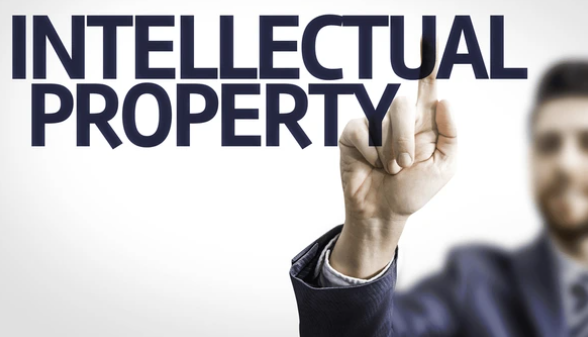The intellectual property (IP) licensing has gone a long way with the pace of technology…
The Changing Jurisdictional Journey of Intellectual Property Rights and Competition Law
Introduction
Competition law and intellectual property rights (IPR) are like two different sides of the same coin, as they both work to ensure vibrancy in the market and promote consumer welfare. Yet, despite having a common point, they sometimes contradict each other’s jurisdiction. In the legal world, competition law and IPR law are often represented by a term, i.e., “friends in disagreement.”[1] Ideally, both of these laws are specific laws made to ensure their specific functions in their respective areas. This means there always exists a thin permissible line between them; however, there are many instances when this line is crossed, which leads to conflict. As a result, this issue continues to remain an unsolved puzzle.
Background
IPR laws give exclusive and protective rights to manufacture and sell a product, service, or technology that is created from an intellectual creation. IPRs are a set of statutory rights protected under the Indian Copyrights Act of 1957, the Patents Act of 1970, the Trademarks Act of 1999, trade secrets, or sui generis protection. Competition law, on the other hand, promotes social welfare by condemning any privilege or exclusive right to any individual by terming it an anti-competitive practice and is governed by the Competition Act 2002 (amended in 2023). IPR laws safeguard the rights of the investor or creator to foster innovation and consumer protection by granting them legally sanctioned temporary monopolies, and any interference by the competition authority at a nascent stage will hamper the whole purpose of granting IPRs.
In contrast, Indian jurisprudence on the important question of how IPR and competition law interact is still in its infancy The Supreme Court and CCI have issued several decisions that define the connection between them. However, at the international level, Trade-related aspects of the intellectual property rights (TRIPS) agreement govern the relationship between IPR and competition on a global scale. The World Trade Organization (WTO) established this international agreement to define specific guidelines for intellectual property protection in each of its member nations. It also addressed concerns about unfair competition and IP rights holders’ trade practices. According to Article 8(2) of the TRIPS Agreement and Paragraph 1 of the TRIPS Preamble, Members may adopt appropriate actions by the TRIPs to stop rights holders from abusing their intellectual property. Articles 40 and 30 of the TRIPS Agreement address limited exceptions to patent rights and anti-competitive activities in contractual licensing, respectively.
Nascent Perspective of Court
There is a plethora of rulings where the court has explicitly discussed the interface of IPR law and competition law. One of the first cases that started resolving the bone of contention between these two laws was “Aamir Khan Production Private Limited vs. The Director-General.” The allegation of the formation of a cartel (Section 2(C) of the Competition Act 2002) of film producers against the multiplexes and theater owners regarding non-screening of movies. Aamir Khan Production filed a writ petition challenging the jurisdiction of the Competition Commission of India (CCI) in respect of the Copyright Act 1957 provision. However, the same has been dismissed, and the High Court of Bombay held that the CCI also has jurisdiction to hear IPR matters.
After this case, there were numerous instances where the court reiterated the relationship between IPR and competition law time and again. In the case of “Valle Peruman and Others Versus Godfrey Phillips India Limited,” the Court observed the unfair trade practice of trademarks and hence stated that there is a possibility that all types of intellectual property have the potential to distort competition; hence, IPR would always be within the periphery of competition law. It could be safe to assume that IPR laws can be looked into by CCI when needed for anti-competitive practices.
The changing landscape of intellectual property rights (IPRs) and competition law
Isn’t it too early to say that CCI will prevail over IPR? The assumption created in the above cases has been distorted by one of the recent cases of the Delhi High Court. In the case of Telefonaktiebolaget LM Ericsson (PUBL) v. Competition Commission of India, Anr.[2] challenged the jurisdiction of the CCI relating to the matter of IPR laws, which have been traditionally followed by the court for a particularly long period. The Delhi High Court, in its ruling in the cases of Ericsson v. CCI, 2016, and Monsanto v. CCI, 2020, has held that CCI has the power and authority to intervene in a patent licensing dispute (patent licensing is an agreement to give someone the right to use and sell your invention for a particular period) under sections 3 and 4 of the Competition Act 2002.[3] However, the judgment in Ericsson and Monsanto has been overturned by the present order passed by the High Court in PUBL versus the Competition Commission of India and Anr. The primary question raised by this decision is whether or not CCI may investigate an agreement about the patentee’s rights protection under the Patent Act.

According to the order, the Patents Act takes precedence over the Competition Act as regards allegations of unfair terms in license agreements, misuse of a patentee’s position, the requisite investigation of those allegations, and ultimately, the relief available. The Court further held that Chapter XVI, which was inserted in 2003 amending the Patents Act (i.e., after the enactment of the Competition Act), is a “complete code” on all matters relating to unreasonable terms in agreements relating to licensing of patents; abuse of a patentee’s status; inquiries relating to those matters; and relief for those matters. Therefore, the Court held that the “Patents Act” is a “special statute” and not the “Competition Act”. The Court also held that, having regard to the question of whether a patentee “exercises” its rights under the Act, the Act must take precedence over the Competition Act. Although the Court allowed the appeals brought forward by Ericsson and set aside the judgment delivered in 2016, it dismissed the proceedings brought before it by the Competition Commission of India.[4]
Contrary to this, in the case of CCI versus Bharti Airtel, the apex court held that when there is a conflict between the sectoral regulator and CCI, the latter can intervene if needed. Interestingly, this judgment of the Delhi High Court did not provide concrete reasoning to differ from the decision of the Apex Court, hence creating a vacuum that will lead to distortion of the market. Currently, the matter is pending in Apex Court on a special leave petition that was filed by CCI against the Delhi High Court’s decision in PUBL v. Competition Commission of India and Anr.[5] The main question before the Supreme Court is regarding the application of the Competition Act to the provision of the Patent Act in cases involving anti-competitive behaviour.
Conclusion
There is no doubt that in the modern economy, IP and competition have complementary roles in the ultimate goal of protecting consumer welfare. IP promotes innovation, which in turn promotes competition in the market. It cannot, however, be ignored that the direct and immediate goals of these two realms of law do conflict sufficiently to need some mode of reconciliation—a middle path. The changing dynamic in the decision of the court with time will surely give a very different way of analysing both aspects of law independently. The competition law in India is at a nascent stage, and hence the competition authorities should look at or understand the case from several perspectives that involve the application of more than a single law.
Author : Misha Kumari, in case of any queries please contact/write back to us via email to chhavi@khuranaandkhurana.com or at IIPRD.
[1] Lakshmikumaran & Sridharan attorneys: Interface between Competition Law and Intellectual Property Laws (2014-25).
[2] Telefonaktiebolaget LM Ericsson (PUBL) v. Competition Commission of India, Anr <https://indiankanoon.org/doc/150896661/ >accessed on 15 March 2024.
[3] Yogesh Byadwal, ‘The Competition Act V. The Patent Act: Catch 22’ <https://spicyip.com/2024/03/the-competition-act-v-the-patent-act-catch-22.html > accessed 14 March 2024.
[4] Lexology: Analysing the Telefonaktiebolaget LM Ericsson (PUBL) vs Competition Commission of India & Anr. Case (2023).
[5] SLPC 25026/2023 <https://www.livelaw.in/pdf_upload/4234920232024-03-01-525522.pdf> accessed on 14 March 2024.



